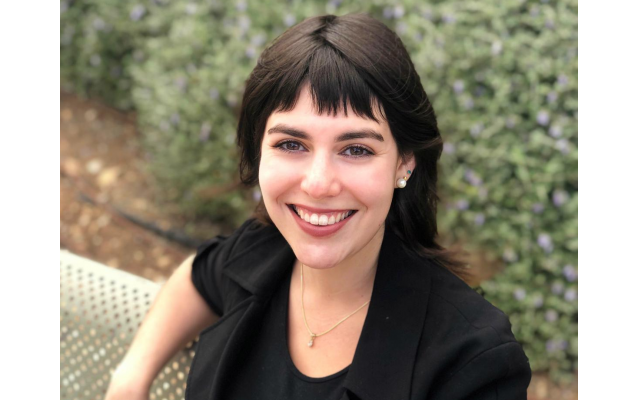YIR: Female Rabbi-To-Be Emerges From Orthodox Roots
“Rav Amalia” Mark, Congregation Etz Chaim’s first female intern and clergy member, joined the congregation in August.

September 25, 2019
“Rav Amalia” Mark, Congregation Etz Chaim’s first female intern and clergy member, joined the congregation in August. She was an integral part of the clergy team during the high holidays, leading the youth service and giving the sermon on the second day of Rosh Hashanah. She continued to lead Shabbat services and perform other duties during the year while completing her fourth year of a five-year program at the Rabbinical School of Hebrew College in Boston. She also serves as a rabbinic intern at the Mayyim Hayyim, a nondenominational community mikveh in Boston.
“I’ve learned so much in the half of the year. From giving my first sermons, to leading Shabbat morning davening, to discovering the fine art of calling page numbers, I’ve grown in my rabbinic pulpit skill set,” Mark said in an email correspondence last week.
Rabbi Daniel Dorsch said Mark is part of a larger effort by the synagogue to be more inclusive of women.
“Given our synagogue’s strong history of egalitarianism, the decision to employ a female rabbinic leader, as well as to [allow women to] duchen on the holidays, fit well into our historic vision for our community.” The AJT wrote about “The Evolving Role of Women During the High Holidays” Oct. 2.
“One of the more touching stories I heard, for example, were stories of the tears of bnot-kohanim crying in the back following the duchening experience, having been profoundly moved by the opportunity to bless members of the congregation. This success continues to affirm for me that our vision of inclusivity and egalitarianism must remain at the forefront of who we are,” Dorsch said.
“At Etz Chaim, we have always striven to be an out of the box, creative, modern congregation, not afraid to experiment. Needless to say, both of these ‘experiments’ have taught us how powerful inclusion is as a tool to continue to engage different voices among members of our kehilla.”
Mark said that “witnessing the first group of women duchening on the high holidays was a true shechiyanu moment for me. I was trying very hard not to cry as I listened … There was a radiance in their faces as they left the bimah. I was deeply moved …”
She recalled another time in the service during which a woman was leading musaf and she was calling page numbers and there were only women on the pulpit.
Dorsch said, “From our end, her [Mark’s] presence has been wonderful for women of all ages, especially for our young children (including my 2-year-old daughter) who now have a strong, charismatic, female rabbinic role model to look up to in our community.”
Mark will be visiting Etz Chaim monthly between now and the end of the academic year, Dorsch said.
So what does the future hold for Mark? “We have begun initial conversations about the formation of an Etz Chaim Jewish Art Collaborative. Rav Amalia has a passion for art (her mother is an artist as well) and we are optimistic that this will serve as a terrific internship project for her to build in 2020.”
She said she also wants to “facilitate some learning around mikveh and our local, pluralistic community mikveh, MACoM.”



comments